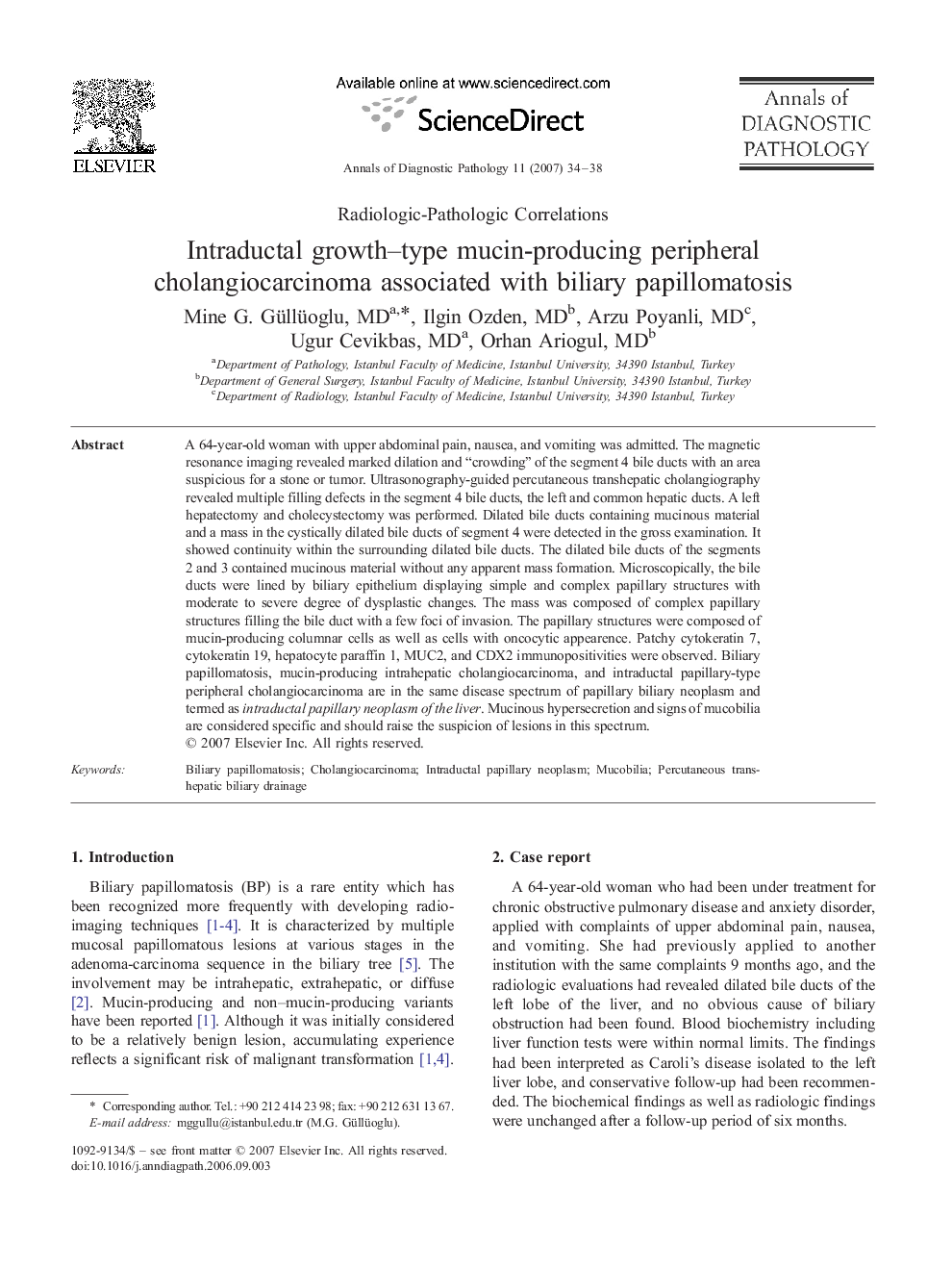| Article ID | Journal | Published Year | Pages | File Type |
|---|---|---|---|---|
| 4130618 | Annals of Diagnostic Pathology | 2007 | 5 Pages |
A 64-year-old woman with upper abdominal pain, nausea, and vomiting was admitted. The magnetic resonance imaging revealed marked dilation and “crowding” of the segment 4 bile ducts with an area suspicious for a stone or tumor. Ultrasonography-guided percutaneous transhepatic cholangiography revealed multiple filling defects in the segment 4 bile ducts, the left and common hepatic ducts. A left hepatectomy and cholecystectomy was performed. Dilated bile ducts containing mucinous material and a mass in the cystically dilated bile ducts of segment 4 were detected in the gross examination. It showed continuity within the surrounding dilated bile ducts. The dilated bile ducts of the segments 2 and 3 contained mucinous material without any apparent mass formation. Microscopically, the bile ducts were lined by biliary epithelium displaying simple and complex papillary structures with moderate to severe degree of dysplastic changes. The mass was composed of complex papillary structures filling the bile duct with a few foci of invasion. The papillary structures were composed of mucin-producing columnar cells as well as cells with oncocytic appearence. Patchy cytokeratin 7, cytokeratin 19, hepatocyte paraffin 1, MUC2, and CDX2 immunopositivities were observed. Biliary papillomatosis, mucin-producing intrahepatic cholangiocarcinoma, and intraductal papillary-type peripheral cholangiocarcinoma are in the same disease spectrum of papillary biliary neoplasm and termed as intraductal papillary neoplasm of the liver. Mucinous hypersecretion and signs of mucobilia are considered specific and should raise the suspicion of lesions in this spectrum.
